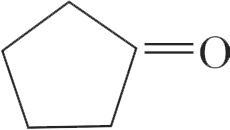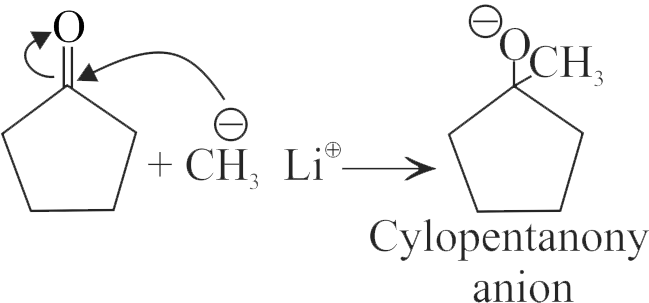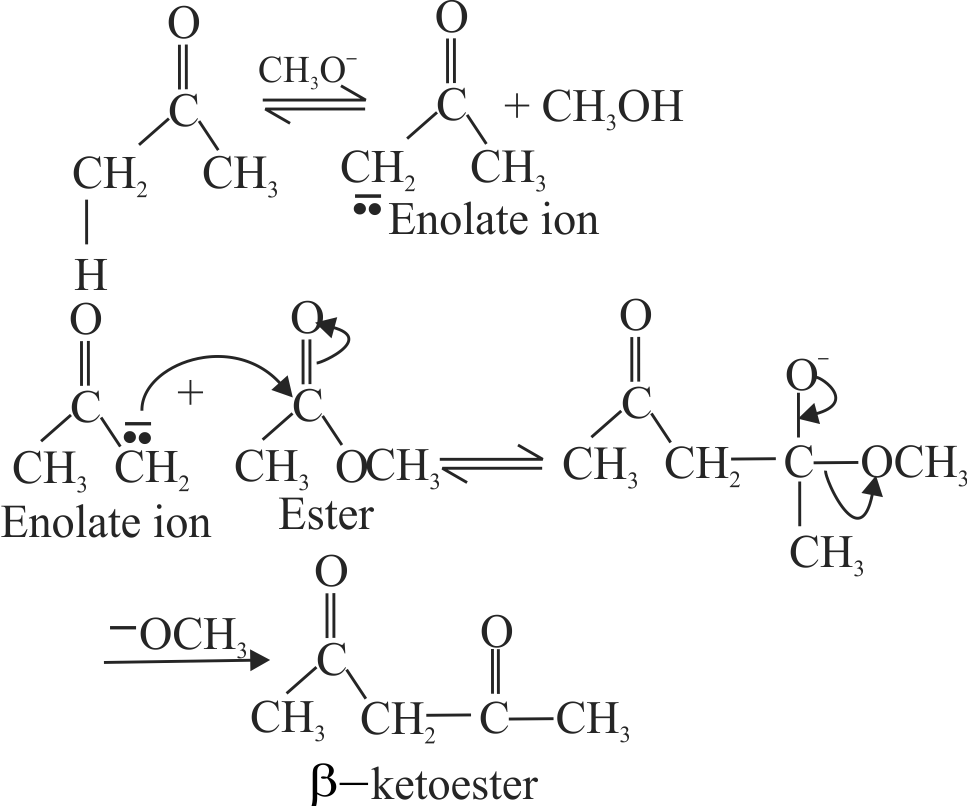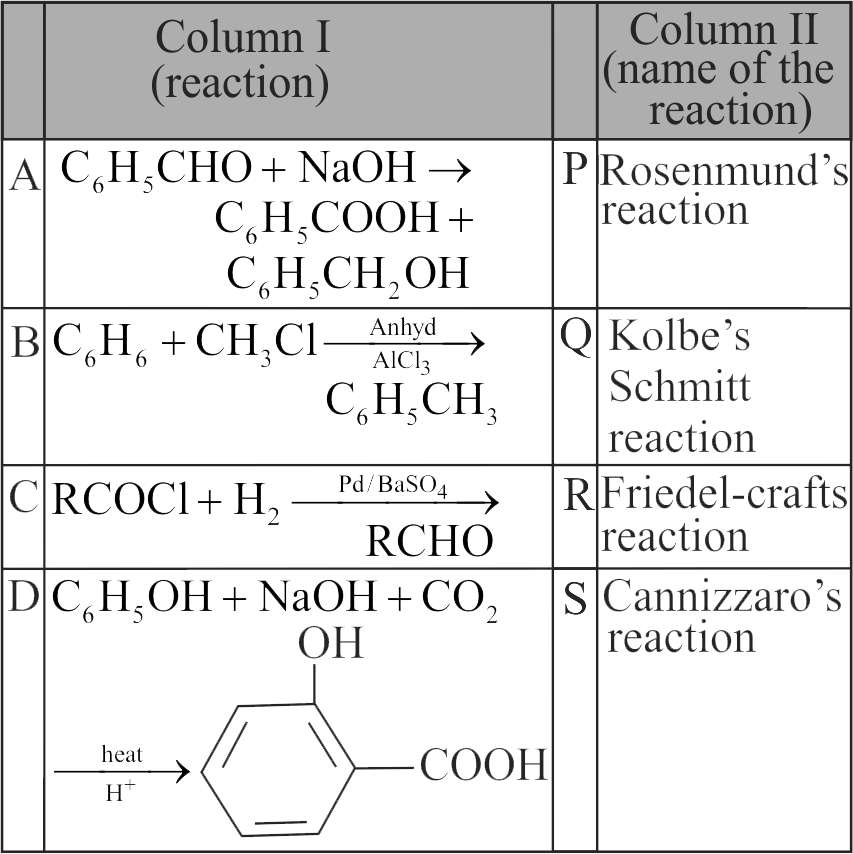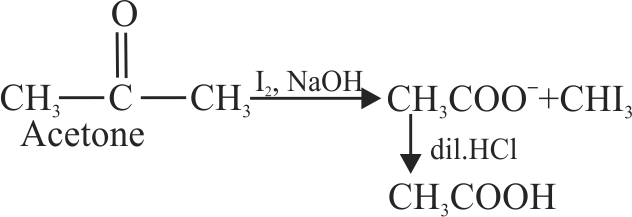323551
Consider the following statements
(A) On reaction with Grignard reagent followed by hydrolysis acetone gives tertiary alcohol
(B) Mesitylene is polymer of acetone
(C) Chloroform gives chloretone with acetone
(D) Acetone ammonia is an addition product of acetone with \(\mathrm{NH}_{3}\)
The correct statements are
323551
Consider the following statements
(A) On reaction with Grignard reagent followed by hydrolysis acetone gives tertiary alcohol
(B) Mesitylene is polymer of acetone
(C) Chloroform gives chloretone with acetone
(D) Acetone ammonia is an addition product of acetone with \(\mathrm{NH}_{3}\)
The correct statements are
323551
Consider the following statements
(A) On reaction with Grignard reagent followed by hydrolysis acetone gives tertiary alcohol
(B) Mesitylene is polymer of acetone
(C) Chloroform gives chloretone with acetone
(D) Acetone ammonia is an addition product of acetone with \(\mathrm{NH}_{3}\)
The correct statements are
323551
Consider the following statements
(A) On reaction with Grignard reagent followed by hydrolysis acetone gives tertiary alcohol
(B) Mesitylene is polymer of acetone
(C) Chloroform gives chloretone with acetone
(D) Acetone ammonia is an addition product of acetone with \(\mathrm{NH}_{3}\)
The correct statements are
323551
Consider the following statements
(A) On reaction with Grignard reagent followed by hydrolysis acetone gives tertiary alcohol
(B) Mesitylene is polymer of acetone
(C) Chloroform gives chloretone with acetone
(D) Acetone ammonia is an addition product of acetone with \(\mathrm{NH}_{3}\)
The correct statements are
